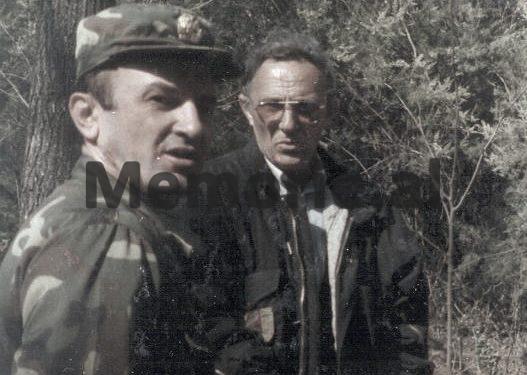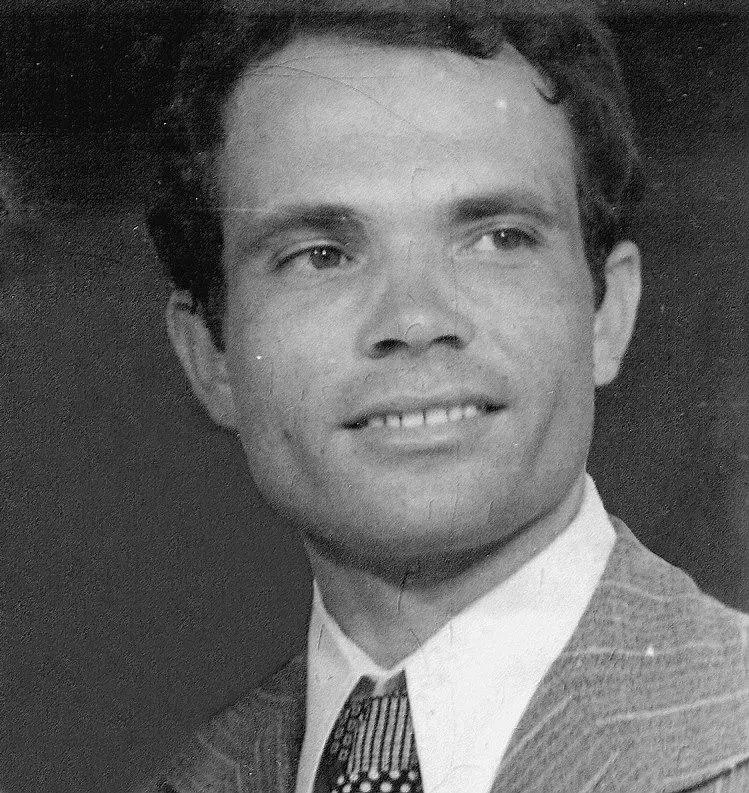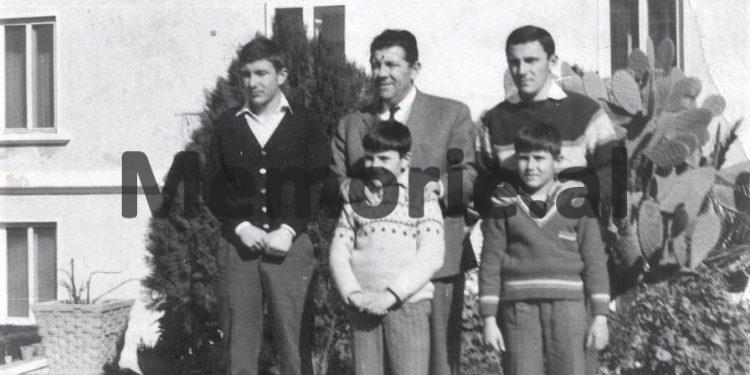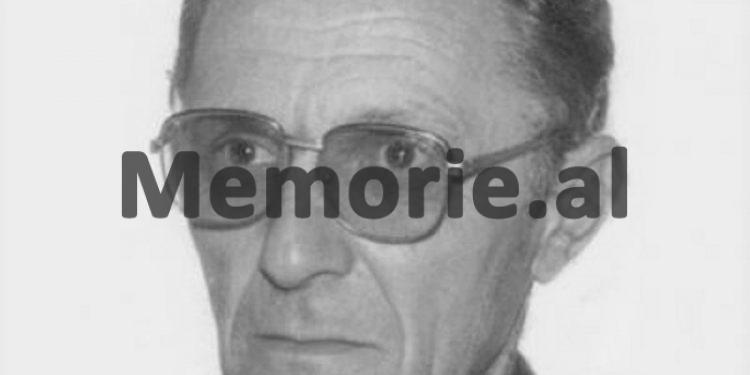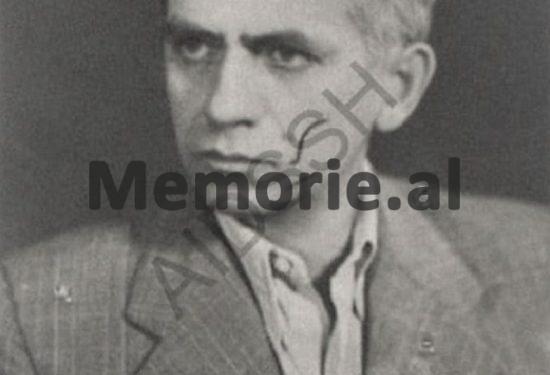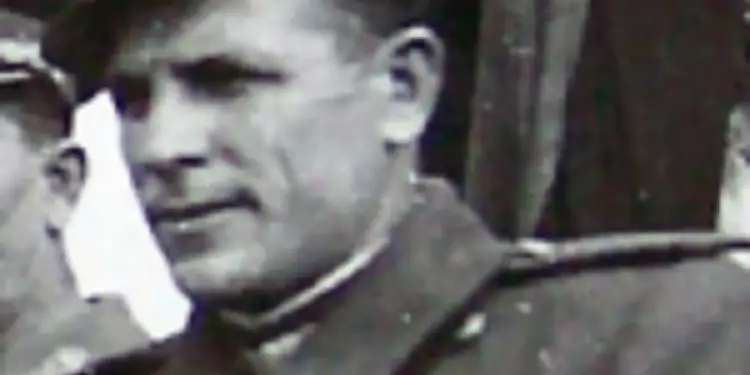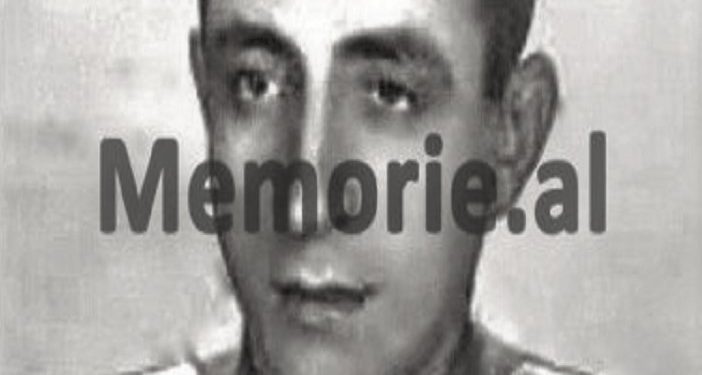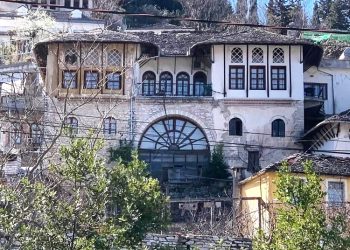By Vasil Qesari
Memorie.al/ The overthrow of the great totalitarian edifice in Albania would leave behind, not only the change of the system, accompanied by lots of hopes, mirages and cries of happiness but, unfortunately, also many wounds, dramas, victims, dust, milk and disappointments from the most different. Ten years and more after that event, which deeply shook society, completely overturning many previous codes, rules and concepts, people still continue to ask themselves such questions as: What really happened in society Albanian, during the last 50 years of the dictatorship? How was it possible that the system managed to warp everything? Why did people accept it? What was the totalitarian logic of the transformation of society and the individual? How were the structures of totalitarian mechanisms conceived and functioning: propaganda, secret police and the exercise of the ideology of terror? How did it happen that among all the communist countries of Eastern Europe, Albania was considered an exception or a special case? Why did Enver Hoxha remain blindly, fanatically loyal to Stalin until the end, turning the country into a prison where violence, fear and purges continued until the end of the 80s? Why was the country so insanely isolated, locking people up between bunkers and barbed wire? Why, then, did all the above phenomena happen…?! The book “Post-scriptum for Dictatorship” does not claim to provide definitive answers to the above questions, or the complexity of the reasons that brought and maintained the totalitarian power in Albania. Nor is it a complete, deep and comprehensive fresco of the life and suffering that people experienced during that system. Its author, perhaps, has the merit that together with the retrospective view of the totalitarian period as well as the zeal of a passionate analyst, he has tried to turn his head back once again, to give not only his personal memories and opinions, but also to return once again to the vision of that era with the simple philosophy of preserving the Memory and supporting the Appeal to never forget the well-known maxim, that…the corpse’s nails and hair continue to grow even after death! Ten years or more after the great revolution, the book in question has current value and we hope it will be appreciated by the reader because, as an Albanian researcher also says… the greatest evil that can happen to a people comes when he fails to analyze his own past. An amnesic people are forced to be constantly neuropathic and repeat their painful experiences…!
DEBIT COMMISSIONS
Another original way to fight the regime’s enemies and opponents was the deportations. From the formal side, they were carried out through an ordinary administrative decision, taken by the so-called Commission of Deportations which operated near each Executive Committee. His designation, in reality, according to decree No. 5912 of 1979, was the Internment and Stay Ban Commission. In fact, the commission in question did nothing but execute the lists compiled by safety, in cooperation with the popular councils and organizations of the Democratic Front. Individuals and families who were deported (cynical euphemism of the regime), were taken by force to live and work in desolate, deep and lost areas, where their surveillance and control was easier and, isolation from society, full. According to the cases, the internees lived in uninhabitable environments such as: barracks, cow stables, dilapidated and abandoned buildings and, rarely, even in two-three-story buildings, dirty, without water and without electrical installations.
Upon settling in the place designated by the Deportation Commission, families or interned individuals were strictly prohibited from moving outside the work and residential area without permission. They were obliged to appear twice a day at the police stations, at the operative of the area or, where they were absent, at the People’s Council. As for the children, they were educated until the end of the 8-year school and, then, they started working just like their parents: on farms, agricultural cooperatives or mines…! Uprooted from their family roots or roots, coming from the north of the country and installed in the south or vice versa, the internees were scattered all over Albania. Specimens and specimens of second-class citizens, young Jews of the Stalinist extermination camps, they were not only victims of the extreme violence of the system, but also of society indoctrinated with feelings of hatred and disgust towards class enemies and traitors of the country.
“I was born in Gradishte – says Murat K. – I was the first child born in that sector of the farm. I don’t want to talk about the poverty and misery we experienced, but I want to point out our ruined psychological state, which does not leave us and terrorizes us for days. Imagine! I was 5 years old when I was arrested for the first time by the police. During our military service, we, the “declassified”, were not allowed to touch rifles with our hands, but we got our spirits up by working in the “work brigades”. We never even thought about our youth years…! Our only anxiety has been how to protect ourselves and not fall into the terrible prisons of Spaçi a Burrel, where all our parents and relatives ended up…! We do not know anything about the graves of the 12 dead family members. Until 1953, here in our sector, there was no cemetery, because everyone died in prisons…”! As throughout the country and in Vlora, the deportation campaigns were organized according to the movements of the class war diagram. Usually intense political situations or during the discovery of conspiracies of new hostile groups. Thus, for example, in the middle of the 70s, the deportation of more than 50 families in one night will remain unforgettable in the memory of the city’s residents.
(Horrifying scene. With knocks on doors, orders to get ready in a few minutes and leave for unknown places. With loot and people flailing like cattle on the bodies of military trucks. deformed by horror. Such sights, the elderly Volynites, had seen only during the winter of 1943. Then, when hundreds of their fellow citizens were kidnapped and interned by the Nazis in the extermination camps of Dakau and Mat’hausen).
The event had a great echo and had generated everywhere, horror and fear. After her, people were even more hunched over. They were thanking God that they had been saved that time too…! In Vlora, the classic places of internment were the deepest and most difficult areas in the district, such as sh. the agricultural enterprises of Kota, Peta, Llakatund, Lubonja, the villages of Vërmiku, Kuçi, Gjormi, the city of Selenica and later, the agricultural center of Akërnia. In those miserable dirty towns and farms, you can encounter different categories of enemies. Large tribes of Bajraktars from the North, families of members and leaders of subversive gangs, former leaders of the nationalist organizations Balli Kombëtar and Legaliteti, former high-ranking members of the PPS accused of conspiracies or revisionism, families and individuals recently released from prisons for agitation and propaganda or escape attempts, etc.
(For historical chronology, it is perhaps worth mentioning that, in Vlora, the first place of internment was the island of Zvrnec. However, the authorities closed it very quickly, because the internment of enemies in that natural paradise was considered a privilege and luxury) .
But the symbolic place of exile was the mining town of Selenica. Already after the liberation and, traditionally even after, to serve the sentence, dozens and dozens of families settled there. They lived together in a neighborhood with ground floor houses next to each other, with a single tap and shared toilet. Dirty water flowed in the middle of the road, depicting the thresholds of the shack houses. Dysentery and hepatitis wreaked havoc, especially among children. Many people, including well-known names from the history before and after the Second World War, had lost their lives in that loss. The city, having had a black fate, like the bitumen itself that was extracted from its depths. He had become synonymous with human misery. The inhabitants seemed to have acclimatized so much to the massive presence of the detained people that they too seemed to be exiled. And, in fact, it was…! Abandoned among the mud, garbage, misery and in complete poverty, forgotten at the end of the world, they spent most of their lives like the Uriths, in the earth. There, in the deep galleries of the mine, extracting bitumen that their streets had never seen before…!
…Among others, from Selenica, I keep a special memory. It was 1983. Afternoon. I was standing in front of the city’s only MAPO. The driver of the agriculture section, V.B., asked me if I was curious to see a show where the protagonists were some internees – former characters of Albanian political life. With great desire! – I answered curiously. “Then, we wait a bit… – he added – In a few minutes, precisely at six o’clock, the internees of Selenica appear for appeal at the police district…”! The region was located some 50 meters away. On the second floor of the city’s only Bar-restaurant. Before six o’clock, towards the stairs leading up to the police station, I first saw an elderly man walking. He passed by us. Crouched, with a cane and a cap on his head. “This is the most punctual of all… – said the driver.
Who is he? – asked. Bedri Spahiu…! Former former member of the Political Bureau…! As far as I know, he must have been interned in Selenica, since 20 years or more – explained V.B.
Bedri Spahiu…?! He still lived…?! While I knew him dead for a long time…?! I flashed back to visions of memories. I had seen his picture only once in my life. In a book published since liberation. It was a semi-political, semi-literary publication. He was alongside Enver Hoxha and Sejfulla Malëshova. Bedriu is small and has features cut like a knife. With intelligent eyes and a mole on his right cheek. Below the photo, his rank is also marked: General – Major Bedri Spahiu…!
Then, to have read something, from what the Party books wrote. For hostile activity, exclusion from all its forums, exile, etc. Since then, a whole life had passed, and now he was a completely forgotten name. I saw that old man once more, who, although bent, still kept an expression of pride on his face. And then, again, I asked myself: How was it possible that he was still alive…?! How did you escape the bullet? Why, Enver Hoxha, did you spare him…?!
“See, see…! Others are coming…”, – the driver’s voice shook me from my thoughts – “Look, that man in a black coat is Kristo Themelko! The other, after him, is the son of Beqir Balluk and his wife. Meanwhile, that white-haired woman is the wife of former general Halim Xhelo. Ptu…! The masquerades! They used to be capos, with villas and cars, while now they live for the black side. It’s good to be done…”!
I continued to see with shock the procession of those people like shadows, who seemed to emerge somewhere from the bottom of the earth, and who resembled to me, I don’t know why, the characters of ancient Greek tragedies. Then, I looked around. The citizens of Seleni were walking up and down, in the square in front of MAPO and Bar-Restaurant. Indifferent, gloomy and with slippery faces. Like a shadow…! Without any curiosity to follow that rare spectacle. With all the misery, at least, they are not obliged to report to the police every day; I consoled myself with a deep sense of sadness. Meanwhile, it was getting dark. We got into the car and returned to Vlora. The scenes and impressions of that afternoon remained in my mind, fixed forever…!
IN THE CLAWS OF THE INVESTIGATION
No dictatorship can live without the exercise of terror. This was the reason why the effectiveness of the work of the Security was always measured by the number of arrestees, prisoners as well as the detection of hostile groups. Consequently, there were thousands and thousands of those who ended up in the cells, being innocent victims of a vampire who was never satisfied with blood. The secrets of the cells, the tortures, the methods used, the way of investigations and the preparation of political processes in Albania, constitute a mystery in itself. (Although, in a superficial way several times they have been talked about, the complete truth is far from it). Because, it should be emphasized that the Albanian investigation, like the Albanian totalitarian state itself, in terms of brutality, sadism and criminal methods used, cannot be compared with any other similar structure of the former communist states of the East.
Currently, in various Western countries, the word falls in France, when talking about totalitarian violence, the barbarities of the political police of some of the former communist countries, such as the Soviet Union, East Germany, Bulgaria, are highlighted with priority and especially Romania.
Not a word, or very rarely, is spoken about the unprecedented violence in Albania. Like other times, for incomprehensible reasons, the martyrdom of this country by the dictatorship has been forgotten. This attitude is so absurd and blatant, that in the most voluminous and most complete publication ever made in the West, entitled ‘The Black Book of Communism’, the tragic fate of Albania is left unmentioned or listed as statistics. There, only two or three paragraphs were written about him. Whereas, in the few analytical articles and studies written in France, for Albania, the materials and illustrative examples are extremely limited. They repeatedly refer only to a material of 60 pages that, thankfully, Amnesty International published in 1984, where, with very little evidence, they tried to shed light on the Albanian hell at that time…! However, I say that it is better to leave this task to ourselves, and not to expect it from others. That’s why, it is the honor and duty of the Albanians themselves to write and refer to that era as much and as often as possible. Only in this way, Memory and Memory will triumph by winning the difficult battle over Oblivion and passing Time.
Below, precisely for this purpose, we will try to bring only a few testimonies. In his memoirs, the Catholic priest A.L. says: “My cell in the interrogator was nothing but a prison toilet, full of dried excrement. For 9 months in a row, as long as they kept me locked in it, it was never cleaned. One day, the head of the investigation called me to the office. After the first questions, he punched me in the face and then called three other investigators. They surrounded me and started hitting me, pushing me like a ball, from one to the other. Then one of them grabbed me by the throat, choking me. He held me like that until I fell to the ground unconscious. But, this was not enough…! The other investigator, mounted on my almost lifeless body, began to hit me with his boots, in the stomach, chest and face. I felt the crack of my ribs breaking. In the end, the head of the investigation asked me to admit the crimes I had committed against the people. When I replied that I had not committed any crime, they put electric current electrodes in my temples and I lost consciousness again. It was something inhuman, unimaginable…!
Another day they stripped me naked wet my body with water and tied my hands with a rope. Thus, hanging, so that only the tips of my toes touched the ground, I was held for more than 8 hours. I felt that my body was slowly becoming paralyzed. My legs weighed down like two heavy logs of ice. I seemed to be giving up. However, I found strength and started to scream, scream. Only then, they sat me down, released my hands and allowed me to get dressed…! Locked in the cell, I did not even have the right to perform my personal needs, except twice a day: in the morning and at dinner. It often happened that I would get sick with diarrhea, but despite all my pleas, the guard would not open the door for me to go to the bathroom. Then, I had no choice but to “liberate” myself in the bowl with which they brought me my daily food. Then, at the hour allowed to defecate, I would go to the toilet and wash it before taking the breakfast or dinner ration with it.
During a conversation held in 1995 with the former head of the Albanian investigation B.K., regarding the methods used against political detainees, among other things, he says: “In general, investigations before the development of political processes took a long time. The accused was subjected to interrogation sessions for months. According to practice, they usually took place after midnight and in shifts, often changing investigators every four hours. During the interrogations, in order to complete and carry out the frame of the indictment as needed, in cases of “resistance”, various tortures were applied. So, for example, initially the accused were beaten badly and water was cut off from them.
Then, in case their “stubbornness” continued, the whole arsenal of known tortures was applied. They were kept for hours, chained and submerged in water. Their flesh was burned with cigarettes, their nails were removed with pliers, electric voltage was applied to the galls and genitals, their teeth were pulled out, etc.
The tortures were such that the accused could not withstand them and surrendered quickly. After that, he only prayed for one thing: to be punished or to be made something to die as soon as possible. But the torture, in fact, stopped only when the accused signed the indictment admitting everything that was written in it.
(It even happened that, when the accused was told in a special case that there had been a misunderstanding with him and that he was “innocent”, he was afraid and even more so, because he thought that he was dealing with some new provocation).
The arrested person was ready to accept any other kind of accusation, without cracking his head about how untrue it was. Only to be saved from torture and sentenced to imprisonment as soon as possible. It was this, then, the destroyed psychological and spiritual state of the defendants before the opening of the court proceedings, whose scenarios were prepared in advance down to the smallest details. In the inquest, they were taught by heart the “role” they had to play in front of the jury and those present in the hall. Among the most recent examples of brutality and extreme methods of investigation, there were also those that were implemented after the discovery of the “Hostile Group of Mehmet Shehu” in 1982. In connection with them, the show “Albania of Enver Hoxha” presents the chilling scene (L’Albanie d’Enver Hoxha), which was broadcast for the first time by the Franco-German TV channel Arte, in September 1997. The documentary film, made by Robert Qafëzezi, in collaboration with Ismail Kadare, among others, also presents original footage from the processes of Kadri Hazbiu, Fiqrete Shehu and Feçor Shehu. Memorie.al
The next issue follows




